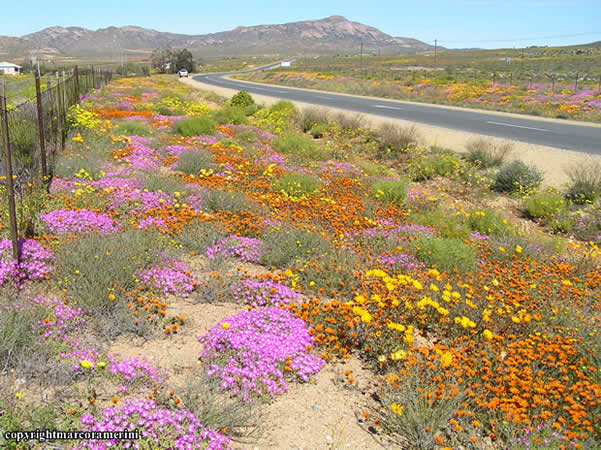This post is also available in:
![]() Deutsch
Deutsch ![]() Français
Français ![]() Italiano
Italiano ![]() Português
Português ![]() Español
Español
The Northern Cape is by extension the largest province in South Africa (it is largest than Germany). But with just over a million inhabitants, it is the least populated province in the country. The Northern Cape, whose capital is the city of Kimberley, is located in the north western part of South Africa. This South African province is bordered by Namibia and Botswana to the north, is washed by the Atlantic Ocean to the west, is bordered by the provinces of the Western Cape and the Eastern Cape to the south, while to the east is bordered by the provinces of the Free State and the North West.
AN ARID AND SEMI-DESERTIC TERRITORY, BUT THAT SOMETIMES RESERVE SURPRISES …
The Northern Cape territory is mostly arid and semi-desert. Most of the province is made up of the Karoo region, a plateau with average heights between 450 and 750 meters, which rises to heights between 1,200 and 1,900 meters towards the south and south-east. In the western area, the one facing the Atlantic Ocean, there is the Namaqualand region, known for its wonderful blooms. The northern end of the province is formed by the Kalahari Desert, an area where sand dunes alternate with the savannah. The Orange River, which is the most important river in the region, crosses the Northern Cape in the northern part of the province, where it forms the Augrabies waterfalls, and marks the border with Namibia for a long stretch.
The Northern Cape territory is sparsely populated. Here too, as in the nearby Western Cape, the majority of the population, about 57% of the total inhabitants, speaks the Afrikaans language and is of the Coloured race, that is, they are mixed race inhabitants generally descendants of crossings between whites and blacks. Another language, spoken by most of the black race population, is the Tswana language. Blacks represent 40% of the region’s total population. Whites are 10% of the Northern Cape population.
- NORTHERN CAPE
- Area: 361,830 km²
- Inhabitants: 1,260,000 (Colored 50%; Black 40%, White 10%)
- Languages: Afrikaans 57%; Tswana 34%; Xhosa 5%, English 2%
This post is also available in:
![]() Deutsch
Deutsch ![]() Français
Français ![]() Italiano
Italiano ![]() Português
Português ![]() Español
Español
